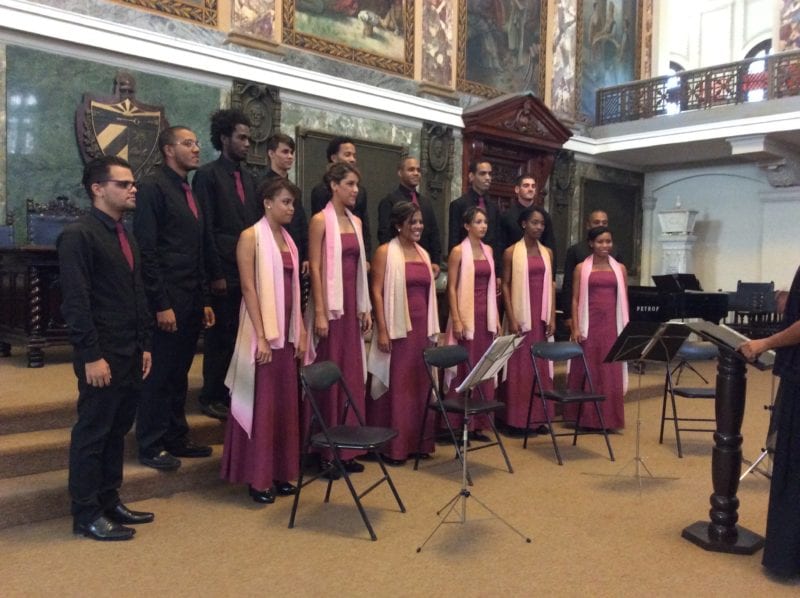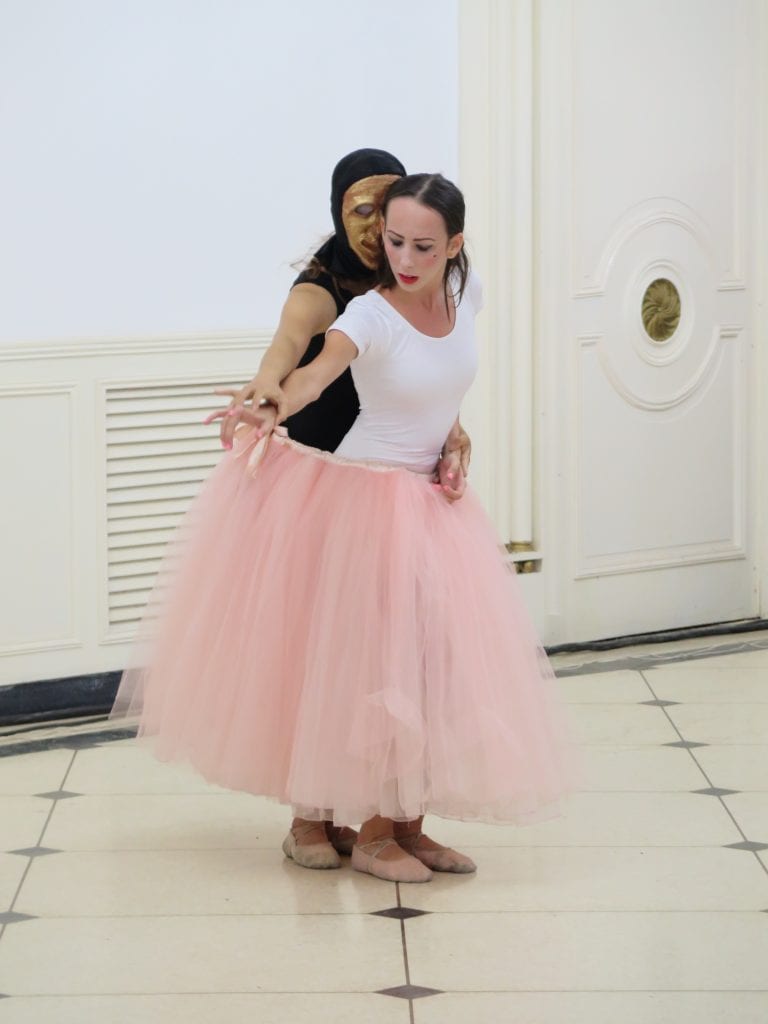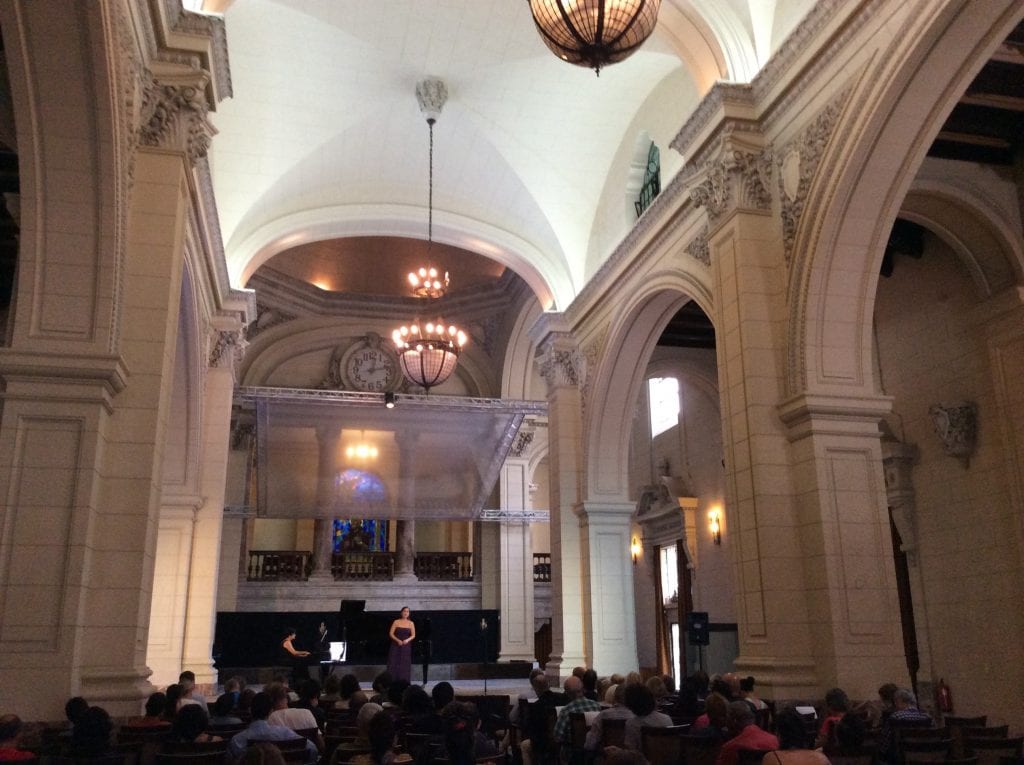Cuba’s First Mozart Festival a Big Success

by Laura Stanfield Prichard
HAVANA TIMES — From October 16-24, the Festival Mozart Habana 2015 celebated a historic collaboration between European and Cuban classical musicians. This international collaborative celebration began to be planned in 2012, and was co-sponsored by the Salzburg Mozarteum (Austria), ISA, the University of Havana, and the Lyceum Mozartiano de La Habana, with the support of the European Union.
Chamber and vocal concerts were performed in the Oratorio San Felipe Neri, the Basílica San Francisco de Asís, the Iglesia Paula, and the Cathedral de la Habana. Orchestral concerts, master classes for local Cuban students, and dance performances took place in the Teatro Martí, the Instituto Superior del Arte, the Teatro Nacional, and the Lyceum Mozartiano. A full program with biographies of all of the leading soloists, conductors, and performing groups can be found here.

The Lyceum Mozartiano de La Habana was founded in 2009 jointly by the office of the Historiador de La Habana Eusebio Leal, the Instituto Superior de Arte (ISA) – the most important institution in Cuba for musical training – and the Universität Mozarteum Salzburg. The Lyceum has a Facebook page and will continue to host events in and above the newly renovated Oratorio Felipe Neri under the directorship of ISA professor Ulises Hernández. The Cuban Youth Orchestra (made up of Lyceum and ISA students) trains and performs at the Lyceum Mozartiano: this vibrant young ensemble, conducted by Walter Reiter, made their Teatro Martí debut in the final concert of the Festival on Saturday, October 24, featuring Mozart’s Clarinet Concerto and his Symphony in C, “Jupiter,” K. 551. The same young Cuban orchestra recently made its European debut in two special “Mozart’s Birthday” concerts in Salzburg, Austria (January 27, 2015).
The opening concert on Oct. 16 at the Havana cathedral was standing-room only. This was the first performance of Mozart’s unfinished Great Mass in C minor, K. 427 in Cuba. It depended upon the collaboration of several award-winning Cuban groups: the Coro de Cámara de Matanzas (dir. José A. Méndez), the Coro “Exaudi” (dir. María Felicia Pérez), the Coro “Scholla Cantorum Coralina (dir. Alina Orraca), the Ensemble Vocal Luna (dir. Wilmia Verrier), the Coro de Cámara del ISA, and professional solists from Europe. The Youth Orchestra of the Lyceum Mozartiano de La Habana, conducted by its principal conductor José Antonio Méndez Padrón, presented Mozart’s Concerto for Flute in G major, K. 313 and provided the instrumental portion for his Mass in C. Two well-attended family events for the Festival included a shadow-puppet theatrical version of Mozart’s Bastien and Bastienne (in the Sala Teatro Retablo el Arca, at Agenda del Puerto esq. Obrapía in Havana Vieja) and a fully staged version of Prokofiev’s Peter and the Wolf translated into Spanish and performed by the new children’s theater company called the Teatro de La Order Tercera (near St. Francisco de Asis, at Oficios e/Muralla y Teniente Rey).

Dr. Ulrich Leisinger, the Executive Director of the international edition of Mozart’s complete works, presented three introductory talks in Spanish and the Salburg Mozarteum showed several films of concerts filmed in Austria, including their recently acclaimed staging of Davide penitente. Leisinger has been Director of the Research Department at the International Mozarteum Foundation in Salzburg since July 2005 and supervises scholarly versions of Mozart’s music, based on the original manuscripts.
This unusual collaborative project showcased a unique combination of European classical and Cuban music traditions, including music by Leo Brouwer, Ignacio Cervantes (Serenata Cubana, on Oct. 17), Cayetano Pagueras (3 Latin anthems on Oct. 19), and new arrangements of Cuban choral music by the Coral Universitaria at the University of Havana. Cuban artists from the world of classical music took a leading role in planning the Festival, and soloists included flautist Niurka González, soprano Barbara Llanes, classical guitarst Magela Labañino, clarinetist Aristedes Porto, and pianists Fidel Leal, Ulises Hernández, and Frank Fernández. The Orquesta Camerata Romeu, the National Symphony Orchestra, and the Orquesta Camerata Romeu all contributed sold-out concerts to the Festival. Master classes and recitals for Cuban students (open to the general public) were offered by German soprano Claire Elizabeth Craig, French violinist Renaud Capuçon, French violist Gérard Caussé, Austrian cellist Clemens Hagen, and German pianist Siegfried Mauser.
Several concert reviews in English can be found here. The full program of the festival can be found here.
Two of the young Cuban professional pianists featured in the festival, playing a piano duet by Mozart in Havana’s San Francisco de Asís.
Click on the thumbnails below to view all the photos in this gallery. On your PC or laptop, you can use the directional arrows on the keyboard to move within the gallery. On cell phones use the keys on the screen.














We had the good fortune being in Habana during the festival and enjoying several of the chamber concerts at the Oratoril San Felipe Neri. In one of his films (Annie Hall? Manhattan?) the Woody Allen persona catalogues works of art which make his life worth living; amongst them was Mozart’s “Jupiter.” Until now, I’ve only heard it on a phonograph record, but this time my friend and I managed to get seats for the final concert at the Teatro Marti, in the box closest the orchestra of the first balcony. I was utterly transported. A memorable night!